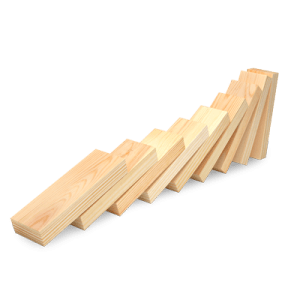Show and tell
What do computers, glow sticks and bells have in common? They all change energy from one form to another.

Overview
Guess the energy transformations that occur with everyday objects and have students bring a device from home for an energy transformations show and tell.
Instructions
What you'll need
- A few everyday devices that transform energy. For example:
- Glow stick (chemical energy to light energy)
- Lamp (electrical energy to light energy)
- Bell (kinetic energy to sound energy)
- Stereo (electrical energy to sound energy)
- Yo-yo (gravitational energy to kinetic energy)
- Flashlight (chemical energy to light energy)
- Computer (electrical energy to light energy)
- "Show and tell" worksheet
- "Letter home"
Day 1 (15 minutes)
- Show your class three devices and ask what they all have in common.
- Explain that the devices all relate to energy and each one shows us how energy can change from one form to another.
- In pairs, predict what the energy input and output for each device is. You can write the forms of energy on the board to help out. Demo and discuss the energy transformations for each device.
- Were their predictions right?
- Ask students to bring something from home that transforms energy for the next class. Brainstorm examples together and give everyone a copy of the "Letter home" to read with their parents.
Day 2 (30 minutes)
- Using the "Show and tell" worksheet, have small groups take turns demonstrating the energy transformation of the devices they brought from home.
- Pick a few items to share as a class and talk about the inputs and outputs.
- Using different question words, write three questions about energy transformations on the back of the worksheet.
Modify or extend this activity
Extensions
- Students research and present the answer to one of their questions from the "Show and tell" worksheet.
- Students create their own device that shows an example of at least one energy transformation.
Curriculum Fit
Grade 4 Science
Content
- Energy has various forms and is conserved
- Devices that transform energy
Curricular competencies
Questioning and predicting
- Observe objects in familiar contexts
- Identify questions about familiar objects and events that can be investigated scientifically
Processing and analyzing data and information
- Sort and classify data and information using drawings or provided tables
Applying and innovating
- Transfer and apply learning to new situations
Assessments
- Assess students’ ability to work together in small groups.
- Assess ability to identify energy inputs and outputs of various devices using the "Show and tell" worksheet.
- Assess ability to generate questions about everyday items using the "Show and tell" worksheet.
Teaching Notes
What is energy?
Energy is the ability or capacity to do work. Energy makes change possible. It is the power or ability to make things happen.
Forms of energy
Energy is all around us. The 10 forms of energy are listed below:
- Electrical energy is produced by the flow of an electric charge. We see or hear the result of this energy as something that turns on, lights up or gets warmer.
- Light energy travels in waves and is visible to us. Light energy is produced by sources such as the sun, fire or light bulbs.
- Sound energy is produced by vibrating objects and travels as sound waves. We hear sound energy in music, birds singing or a fireworks display.
- Thermal (heat) energy is produced by a number of sources such as the sun, a campfire and the oven. We feel this energy as warmth.
- Nuclear energy is stored in the nucleus of an atom and can be released when a heavy nucleus is split into two lighter nuclei (fission) or when two light nuclei join together into one bigger nucleus (fusion). The sun generates its energy through nuclear fusion. This energy can also be released to generate electricity.
- Elastic energy is stored in objects that can be stretched or compressed. We feel the tension when things bounce or are stretched.
- Chemical energy is stored in the bonds of molecules. Chemical energy can be found in food, a battery, gasoline and wood. When the energy is released it transforms into another form of energy. The chemical energy in a battery can be transformed into light energy in a flashlight.
- Magnetic energy is stored within a magnetic field and causes metals to attract or repel each other.
- Kinetic energy is the energy of motion. We can see this energy as things move and change position such as a skateboarder, a skier going downhill or a person walking.
- Gravitational energy is stored in an object due to its height and is caused by the pull of gravity. We see the result of this energy when something falls or feel it when we are jumping off a diving board.
The law of conservation of energy
The law of conservation of energy states that energy cannot be created or destroyed but can be changed. When something happens, energy is transformed from one form to another. The energy input is the energy that goes into an object or system and the energy output is the energy that comes out. For example, electrical energy is the energy input to a lamp and light energy is the output. Depending on the light bulb used, thermal/heat energy may also be an energy output.







